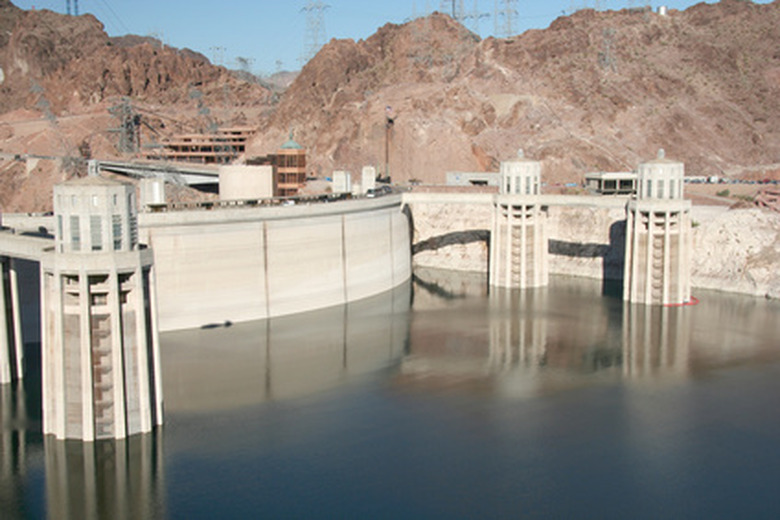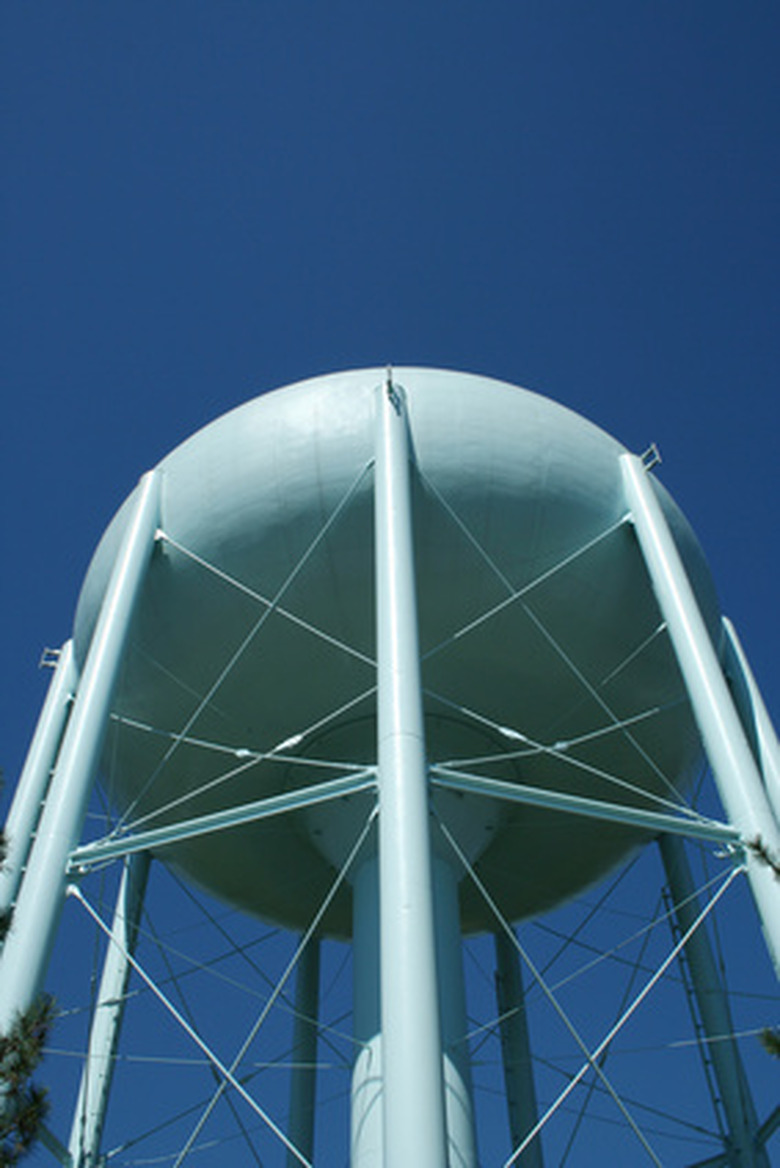How To Calculate Water Head Pressure
Things Needed
-
Calculator or computer spreadsheet
-
Tape rule
-
Pressure gauge
Water head pressure is static pressure caused by the weight of water solely due to its height above the measuring point. The pressure at the bottom of a 40-foot lake or a 40-foot high thin tube would be identical, since only height is involved. The value may be expressed as pounds-per-square-inch (psi) or inches-of-water column pressure (in. W.C. or in.H2O), or metric. This basic calculation is widely used to solve many different practical problems involving water and other liquids of known density.
Basic Calculations
Step 1
Measure the height or depth of the water above the desired measuring point in inches or feet.
Step 2
Divide the depth in inches by 27.71-inches/psi, or the depth in feet by 2.31-feet/psi which are the English unit conversion factors. The result is the water head pressure expressed in psi.
Step 3
Use the calculation to solve a practical problem. An example would be a 150-foot measured water height in a municipal water tower. You would divide 150-feet by 2.31 to obtain the value of static pressure at ground level of about 65-psi. This pressure turns out to be ideal for water companies supplying domestic water at constant pressure assuming flat terrain.
Related Calculations
Step 1
Use the same basic calculation to solve for water height instead. For example, you can determine the depth of water from a pressure gauge reading. In the example above, having an accurate pressure gauge in the tank's down pipe at ground level would allow you to calculate the water's height above ground without a tape measure. This would save you a long climb up and back to check water level each time. If the pressure gauge reads 65-psi, then multiply 65 by 2.31 feet/psi to get 150-feet of water height above ground.
Step 2
Apply the water head pressure calculation to a head-loss computation. If you have to pump water to the fifth floor of an apartment building, and want to have 45-psi water pressure available to the occupants, you can determine the minimum pump pressure required at ground level. If the fifth floor is 55-feet high, then divide 55-feet by 2.31-feet/psi to determine the head loss of pushing the water up five floors. This yields 23.81-psi, which then must be added to the minimum usable water pressure for the occupants of 45-psi, for a minimum required pressure of 68.80-psi. Adding 20-per-cent safety margin would determine that a pump with an outlet pressure of about 80-to-85-psi would work fine.
Step 3
Vary the density to use the calculation for other liquids. In the example of the water tower, this time with sea-water, it would only take 150 divided by 1.03 (the density of sea water), or 145-feet, to create the same 65-psi pressure at the bottom of the tower, since sea water is more dense than fresh water. Conversely, a deep-sea diver descending to 145-feet would experience 65-psi greater pressure at that depth than at sea level, which is more than four times the pressure they would experience on the surface.
Tip
Use these calculations to solve water pumping problems with deep wells or up long hills.
Warning
Check over your calculations carefully when making a one-time pump purchase.




